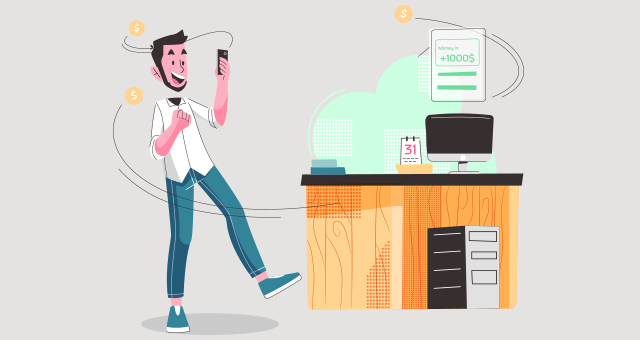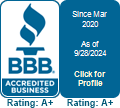
Prioritizing Your Prosperity: 9 Effective Strategies for Paying Yourself First
The phrase, “pay yourself first,” is arguably the most often repeated financial adage. And for good reason. In the hustle and bustle of daily life, it is easy to prioritize bills, expenses, and other needs over financial well-being. However, adopting the “paying yourself first” strategy can be a game-changer when building wealth and achieving financial freedom.
In this article, we’ll explore what it means to pay yourself first and actionable strategies to help you make it a cornerstone of your financial habits.
Understanding “Paying Yourself First”
At its core, paying yourself first is a simple yet powerful personal finance technique. It pushes people to put saving and investing first by setting aside a certain percentage of their income forsavings and investments before allocating money to bills, expenses, or discretionary spending.
Instead of saving whatever is left over at the end of the month (which often isn’t much), you prioritize your financial goals by treating your savings contributions as non-negotiable expenses.
Why Paying Yourself First Matters
Paying yourself first is a mindset shift that puts your long-term financial well-being front and center. By prioritizing saving, you are investing in your future security and creating a financial safety net for unexpected expenses or emergencies. Additionally, paying yourself first helps you break the cycle of living paycheck to paycheck. It empowers you to achieve your financial goals, whether buying a home, purchasing a new car, traveling the world, or retiring comfortably.
Strategies to Pay Yourself First
1. Set Clear Financial Goals
Identify your short-term and long-term financial goals. Are you building an emergency fund? Or saving for a down payment on a home? Or do you intend to fund your retirement?
Having clear objectives willmotivate you to prioritize saving and make it easier to allocate your resources effectively.
2. Automate Your Deposits
Reminding yourself to transfer funds from your checking to savings or investment accounts on payday is the most difficult aspect of paying yourself first. However, moving money around is never a concern anymore because of the wonders of online banking. Take a few minutes to set up automatic payments once you have determined how much money you want to set aside. That way, youwill not have a chance to spend money earmarked for savings and worry about forgetting to pay yourself again.
3. Start Small & Increase Over Time
If you are new to paying yourself first, it’s okay to start small. Aim to save a percentage of your income, even if it’s just 5% or 10%. Remember, even a small amount can mount up over time.
As your financial situation improves or your income increases, gradually increase your savings rate to accelerate your progress toward your goals.
4. Create Separate Savings Accounts
Divide your savings into different buckets based on your goals, such as an emergency fund, retirement savings, travel fund, or down payment fund. Having separate accounts or sub-accounts for each goal can help you track your progress and stay motivated.
5. Look For Chances To “Give Yourself A Raise.”
Take a critical look at your spending habits and try to find methods to raise the monthly amount you are allocating- consider it a reward for all of your hard work! Take a moment to go over your budget: Can you cut back or eliminate any unnecessary spending? Can you cancel any memberships or subscriptions? By living below your means, you will free up more money to allocate toward savings and investments, accelerating your journey to financial independence.
Additionally, set aside a portion of any unexpected income you receive, such as an inheritance, work bonus, or tax refund, for savings or investments. This windfall can greatly advance your financial objectives.
6. Avoid Lifestyle Inflation
Avoid the urge to raise your standard of living in proportion to your income as it grows. Instead, live on a budget that allows you to save and invest a significant portion of your earnings. Redirect any additional income toward your savings goals rather than succumbing to lifestyle creep.
7. Prioritize Paying Off High-Interest Debt
If you have high-interest debt, such as credit card or payday loans, prioritize paying it off as quickly as possible. By eliminating expensive debt, you will free up more money for saving and investing, putting you in a stronger financial position in the long run.
8. Review And Adjust Your Contributions
Life changes, and so do your financial priorities. Regularly review your budget and savings plan to ensure they align with your current goals and circumstances. Adjust your savings contributions as your financial situation evolves, to stay on track and accommodate any changes in income or expenses.
9. Celebrate Milestones And Stay Motivated
Celebrate your savings milestones, whether reaching a specific savings goal, paying off debt, or achieving a certain investment milestone. Acknowledge your accomplishments and use them as inspiration to continue paying yourself first.
Bottom Line
Paying yourself first is a powerful financial habit that can transform your relationship with money and set you on the path to financial independence. By making saving and investing a priority, you are investing in your future self and creating opportunities for long-term wealth accumulation. Whether starting your financial journey or looking to level up your savings game, incorporating these strategies into your routine will help you achieve your financial goals and build a brighter future. Remember, the key to success lies in consistency, discipline, and a commitment to prioritizing your prosperity.


